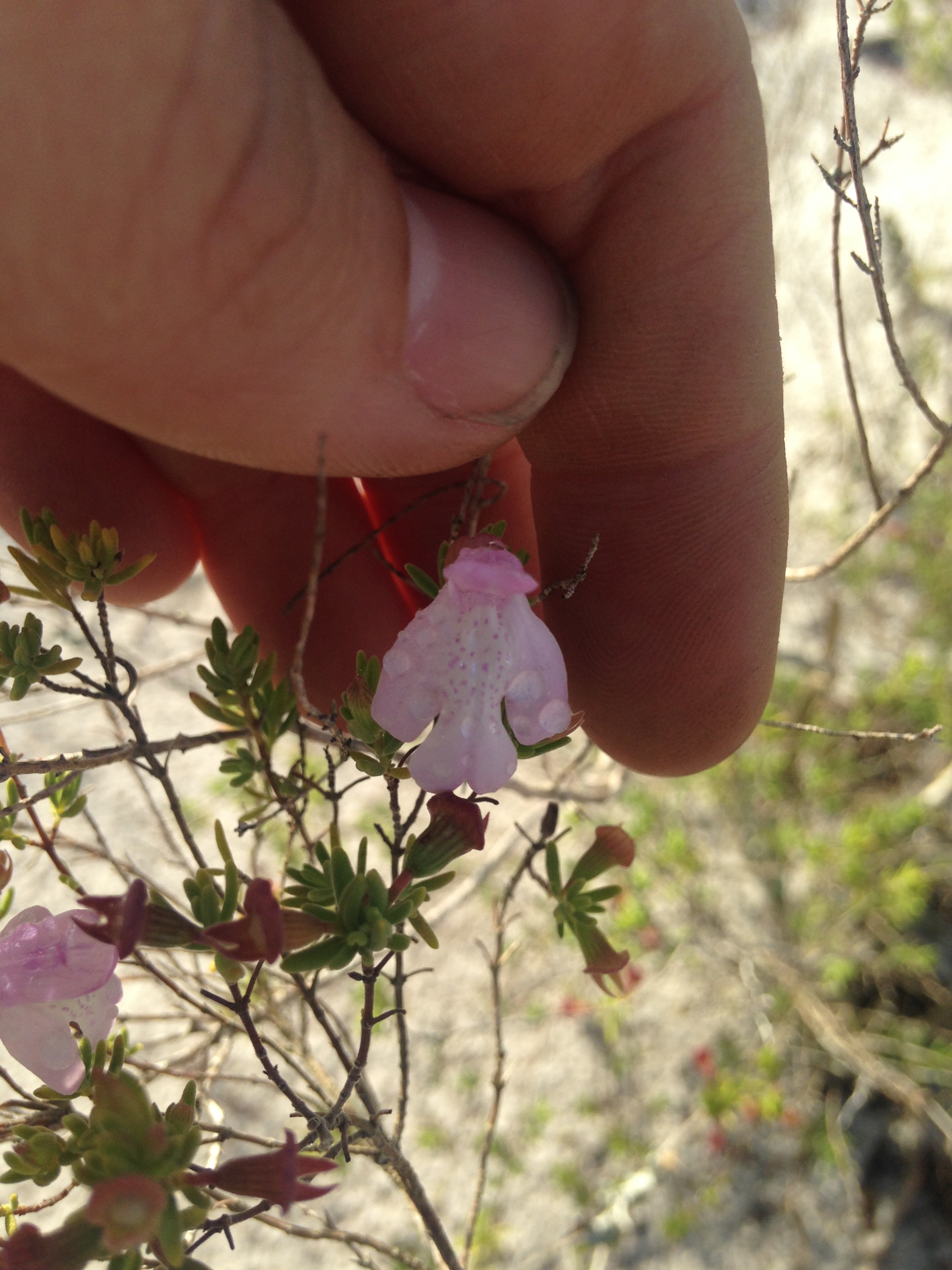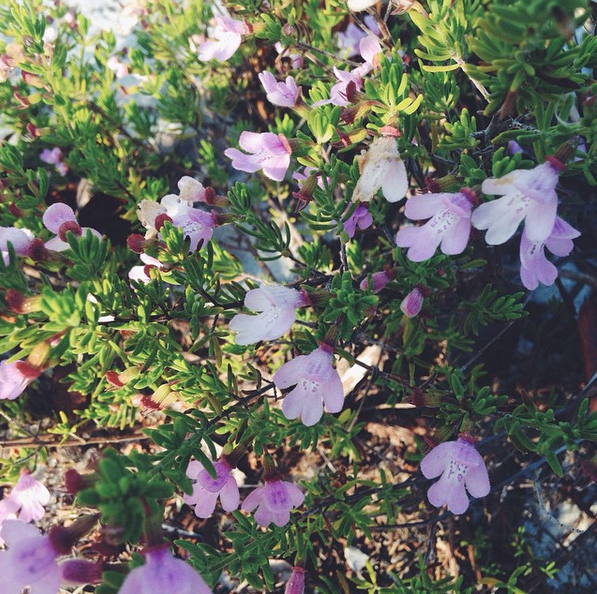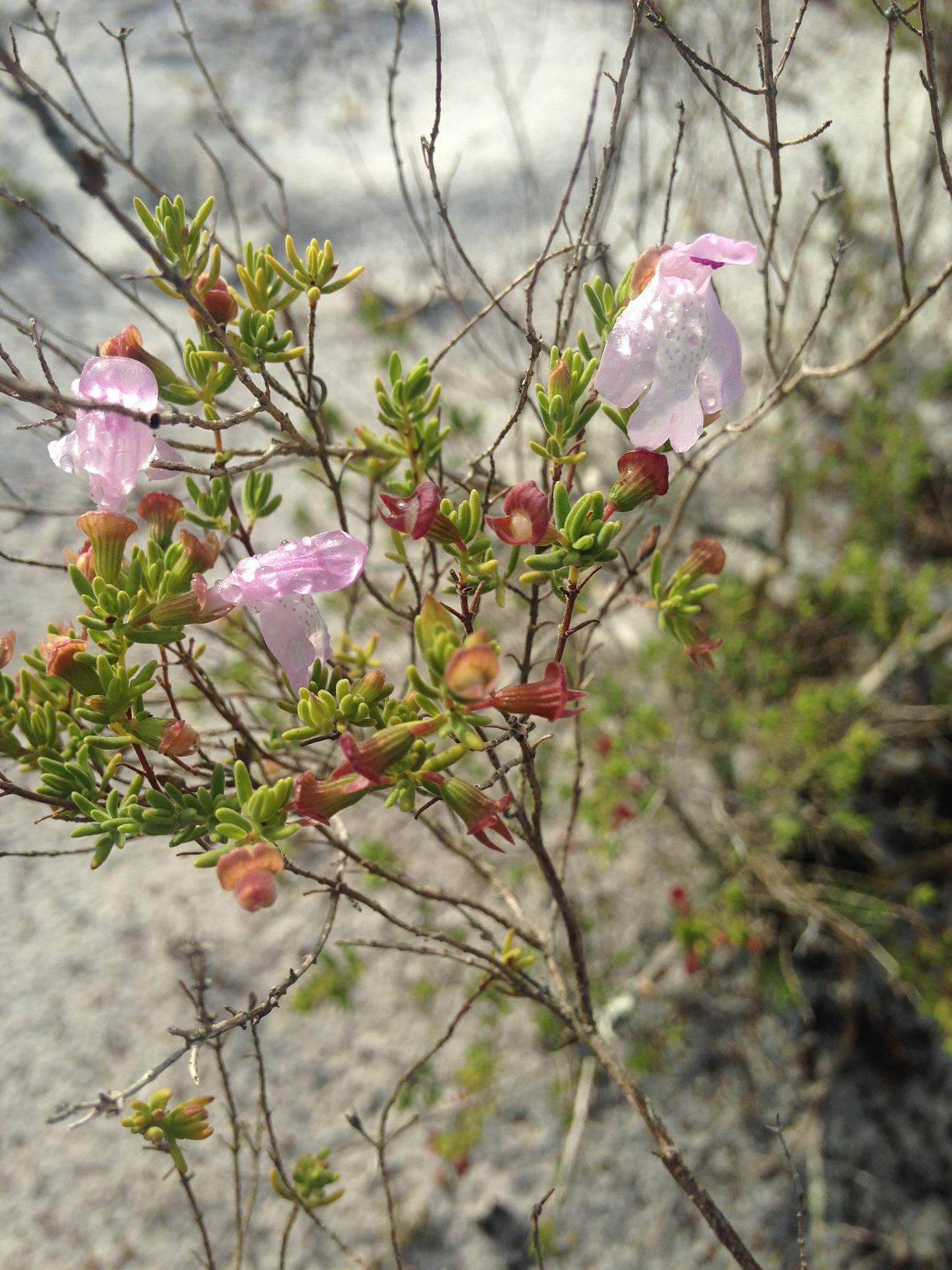Difference between revisions of "Clinopodium ashei"
KatieMccoy (talk | contribs) (→Description) |
KatieMccoy (talk | contribs) |
||
| Line 30: | Line 30: | ||
==Ecology== | ==Ecology== | ||
===Habitat=== <!--Natural communities, human disturbed habitats, topography, hydrology, soils, light, fire regime requirements for removal of competition, etc.--> | ===Habitat=== <!--Natural communities, human disturbed habitats, topography, hydrology, soils, light, fire regime requirements for removal of competition, etc.--> | ||
| − | + | ''C. ashei'' is endemic to the Florida central highlands and southeastern Georgia, it occurs in pine-oak scrub ridges, and in ''Ceratiola'' scrubs <ref name="Natureserve"/>(FSU Herbarium). It thrives in open areas of pine scrubs and disturbed sites such as abandoned fields, roadsides, and fire lanes <ref name="Natureserve"/><ref name="Center">[[http://www.centerforplantconservation.org/collection/CPC_ViewProfile.asp?CPCNum=665 Center for Plant Conservation]] Accessed December 3, 2015</ref>. Associated species include ''Osmanthus megacarpus, Ilex cumulicola'' and, ''Ceratiola ericoides'' (FSU Herbarium). | |
===Phenology=== <!--Timing off flowering, fruiting, seed dispersal, and environmental triggers. Cite PanFlora website if appropriate: http://www.gilnelson.com/PanFlora/ --> | ===Phenology=== <!--Timing off flowering, fruiting, seed dispersal, and environmental triggers. Cite PanFlora website if appropriate: http://www.gilnelson.com/PanFlora/ --> | ||
Revision as of 15:03, 3 December 2015
Common name: Ashe's calamint, Ashe's savory
| Clinopodium ashei | |
|---|---|

| |
| Scientific classification | |
| Kingdom: | Plantae |
| Division: | Magnoliophyta - Flowering plants |
| Class: | Magnoliopsida - Dicotyledons |
| Order: | Lamiales |
| Family: | Lamiaceae ⁄ Labiatae |
| Genus: | Clinopodium |
| Species: | C. ashei |
| Binomial name | |
| Clinopodium ashei (Weath.) Shinners | |

| |
| Natural range of Clinopodium ashei from USDA NRCS Plants Database. | |
Contents
Taxonomic notes
Synonym: Calamintha ashei
Description
C. ashei is a perennial, aromatic shrub with linear leaves arranged in opposite clusters [1] [2]. The bisexual flowers are pinkish-purple [2][3].
Distribution
Ecology
Habitat
C. ashei is endemic to the Florida central highlands and southeastern Georgia, it occurs in pine-oak scrub ridges, and in Ceratiola scrubs [2](FSU Herbarium). It thrives in open areas of pine scrubs and disturbed sites such as abandoned fields, roadsides, and fire lanes [2][4]. Associated species include Osmanthus megacarpus, Ilex cumulicola and, Ceratiola ericoides (FSU Herbarium).
Phenology
Flowers and fruits have been observed January through June (FSU Herbarium).
Seed dispersal
Seed bank and germination
Fire ecology
Pollination
The following Hymenoptera families and species were observed visiting flowers of Calamintha ashei at Archbold Biological Station (Deyrup 2015):
Apidae: Apis mellifera, Bombus impatiens, Epeolus erigeronis, Epeolus zonatus
Halictidae: Agapostemon splendens, Augochlorella aurata, Augochloropsis sumptuosa, Halictus poeyi, Lasioglossum nymphalis, L. puteulanum
Megachilidae: Anthidiellum notatum rufomaculatum, A.perplexum, Coelioxys germana, Hoplitis truncata, Lithurgus gibbosus, Megachile brevis pseudobrevis, M. campanulae, M. exilis parexilis, M. georgica, M. inimica, M. mendica, M. Megachile petulans, M. policaris, M. rugifrons, M. texana, Osmia calaminthae
Use by animals
Diseases and parasites
Conservation and Management
Cultivation and restoration
Photo Gallery
Photo Gallery
References and notes
Deyrup, M.A. and N.D. 2015. Database of observations of Hymenoptera visitations to flowers of plants on Archbold Biological Station, Florida, USA.
Florida State University Robert K. Godfrey Herbarium database. URL: http://herbarium.bio.fsu.edu. Last accessed: October 2015. Collectors: John R. Bozeman, D. Burch, Buswell, L.J. Brass, Chas. C. Deam, R.K. Godfrey, O. Lakela, Sidney McDaniel, Elmer C. Prichard, D.B. Ward. States and Counties: Florida: Highlands, Marion, Polk, Volusia. Georgia: Tattnall. Compiled by Tall Timbers Research Station and Land Conservancy.
- ↑ [USDA Plants] Accessed December 3, 2015
- ↑ 2.0 2.1 2.2 2.3 [NatureServe]Accessed December 3, 2015
- ↑ [Lady Bird Johnson Wildflower Center]Accessed: December 3, 2015
- ↑ [Center for Plant Conservation] Accessed December 3, 2015

